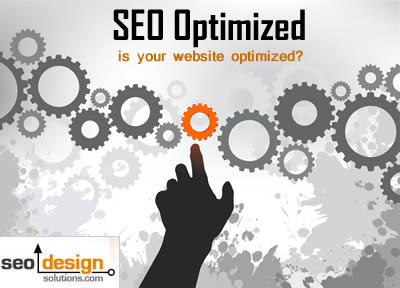Keeping page titles on topic and URLs strings focused is one way to increase search engine relevance for SEO and keeping your pages SEO optimized, but what are some other useful metrics that one can use to set their site in a category of its own when it comes to scaling the SERPs? (search engine result pages).

Primary ranking factors for acquiring a search engine result include:
1) Content – the amount of content on any given page should be sufficient in contrast to the competition to gain relevance for the said term. Since content is scalable, your search engine position will dictate if you require augmentation from other pages within the site or from additional inbound links in order to tip the scale in your favor. If you are on page 5, then chances are, you could benefit from additional content to cement topical relevance.
2) The Title Tag – keeping titles succinct when possible is always a great way to increase search engine relevance. However, the title also needs to consider the secondary and tertiary needs of the other keywords on the page (for SEO value) as well as having enough click appeal to encourage actual click throughs from searchers who are randomly skimming for relevance.
3) The Default Meta Description – Even though you have content on the page itself, it can become nebulous or diffused. Use your default meta description so that when people are searching for relevant shingles (keywords combined) that your page has a clear snippet in the SERPs (search engine result pages).
You will note, that based on the search executed, you will see words highlighted in bold. These bold words represent the keywords where the search engine algorithm locked on to these words and used them to pull the result from the index into the running as a candidate for that search.
The more precise your snippet (in this case meaning the more that keyword exists on the page) and is surrounded by other relevant signals, the higher chance of someone (a) clicking your result and (b) search engines moving your page up the ladder for the next time around.
Many speculate that engagement time, bounce rates and dozes of various metrics (from toolbar data, analytics, etc.) constantly calculate if a searcher executing a query found PAGE A to be the most relevant result or if PAGE B has a higher engagement time / satisfaction rate (as well as off page reputation). Based on aggregate data gleaned over time, the chances of PAGE B being promoted and PAGE A being demoted by the search algorithm is elementary.
4) The URL choice and naming convention – Although Google and other search engines have the ability to parse long parameters instituted by content management systems, analytics parameters and the like (domain.com/p=ID723&PTR-neb.aspx vs. domain.com/keyword-targeted.aspx), there is nothing like a succinct URL string to reinforce continuity and on page relevance.
Remember within the triage of components responsible for producing a top ranking (content, site architecture / URL / naming conventions and inbound links) two out of three factors are under your control.
5) Link Weight and Transference – The amount of links that pass value to your pages are what catapult your pages past others. From one standpoint, it is based on co-occurrence, from another, reputation and momentum. In either case, through internal links, hundreds of pages within your own site (with on topic titles, and tags) or through inbound links from other websites, any link that passes value is a link that search engines assess when calculating relevance, prominence and importance.
What Does Optimization Imply?
Optimization implies streamlining a nebulous array of data to one coherent source for retrieval. Hence, the easier you make it for search engines to index all of the 200+ metrics used in order to assign relevance, structure and rankings, the easier your pages can glide past less refined sites targeting the same keywords or search engine ranking objectives.
Think of keywords like orbital concentric circles all orbiting their own trajectory (like a solar system in cyberspace) and then a search is executed which creates a linear vacuum that can parse all of the circles. Within that vacuum, all of the sites producing a strong enough signal have an imprint that is pinged by the search query are retrieved and evaluated with further scrutiny through a process of elimination.
As a result, the site with the strongest on page and off page factors (content, coherence, relevance and authority) will rise to the top as a contingent of the page with the least resistance and hence highest mathematical relevance (according to the algorithm).
In a simplified format, this is one way that search engines assess relevance for documents in the index. Think of it as the process of elimination as search results are sifted and then reevaluated based on the core elements they project.
The title is the first and most prominent signature. The title is used for the process of both coherence and for the process of elimination.
If the signal strength (shingle relevance) is strong enough, it will make it into the next round of evaluation and have the meta tags incorporated to determine core relevance. If the page then makes it past that round of elimination (from the other 1000 pages fighting it out for the top 10 positions).
Using stop words in a title (and, of, the, etc.), the order of the words chronology, CAPS or lowercase letters, hyphens, quotes or the number of words used all shape the initial scope of relevance for the page.
Although search engines parse this data simultaneously, for the sake of chronology, lets assume the next level of analysis goes to the on page and off page factors (number of words, relationship of co-occurrence, relevance, which phrases are predominant (are there patterns or semantic hash marks?).
If a pattern is not found, the search engine looks for page strength and reputation to see if THAT page has enough co-citation from other sources online to be deemed the most relevant result for that query. Obviously, for less competitive words that are more nebulous or are polysyllabic (and can have multiple meanings) ranking for open ended less competitive keyword shingles is easily accomplished.
These are known as long-tail phrases and are great keywords to use as cornerstones (like rungs on a ladder) when attempting to scale a competitive landscape and target a more competitive (refined and popular) keyword or key phrase.
If you want to rank for a specific query, then (a) the more pages you have where you have the shingle (group of words) in “exact match” instead of “broad match” determine which page will be selected based on the on page significance algorithmically.
By working in tandem with the basic information retrieval method which is predominant in search engines, you escalate your chance of outranking others who are less likely to emit the right signals (as a result of on page sculpting).
In this instance, on page sculpting means refining links, keeping titles, meta data consistent and all words on the page focused on one semantic objective. This also includes assigning a pecking order through the proper use of anchor text and internal linking.
Going back to the initial focus of this post, the idea is, to (1) use a succinct title, starting with the keyword first if applicable [*more on naming conventions here] (2) using the H1 tag with the main keyword to signify the heading / what this page is about (3) to use the keyword in the first 25 words of the document for continuity (4) use the keyword in bold, or as anchor text (as a page anchor or link to an even more relevant result) and (5) to get as many relevant links with that keyword to THAT page to elevate its ranking position and relevance score.
By successfully managing these subtle yet important criteria, you can essentially cut your dependency on any one metric considerably.
For example a page with a relevant title, reinforced by strong site architecture (in a themed folder) and supported by relevant text (on the page) and supported by other pages with strong internal links will rank higher than a page that has an off topic title, fails to mention of the keyword in the meta data, has sparse content on the topic and is orphaned from lack of internal or external links.
The choice of how many factors you embrace and how refined your signal strength is for any given keyword or group of keywords for an industry or topic is truly up to the amount of time and detail you wish to invest in structural continuity.









Yes, thanks to you.
all in one search engine
Very good preservative on SEO Optimized thaks.
Very useful tips for seo and really very helpful for any seo learner to fetch important points from this article
thanks for this useful tips!
great post
This is a very informative article.I was looking for these things and here I found it. I am doing a project and this information is very useful me.